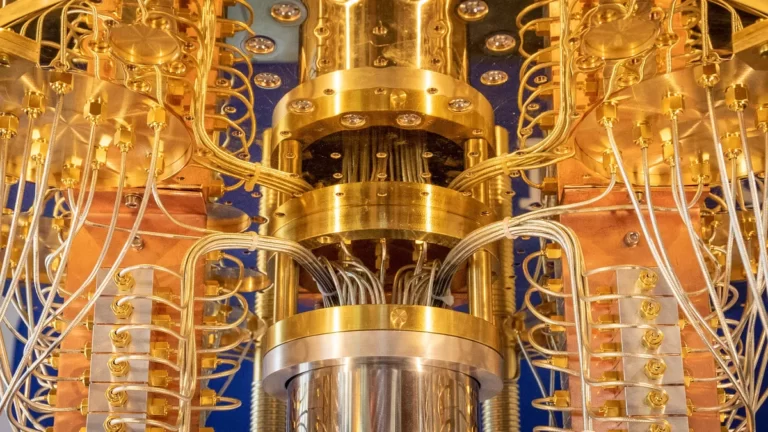Imagine searching a phonebook for a specific name. With a classical computer, you'd have to check each entry one by one, which can be time-consuming for large datasets. But what if there was a way to find the information exponentially faster? Enter Grover's search algorithm, a powerful quantum algorithm that tackles this challenge!
Here's a Qiskit program demonstrating Grover's search:
from qiskit import QuantumCircuit, Aer, execute# Define the number of qubits (number of items in the search space)n = 3# Create the quantum circuitqc = QuantumCircuit(n)# Apply the Oracle (identifies the target element)target = 1 # Assuming we're searching for the second element (index 1)for i in range(n): if i == target: qc.h(i) # Apply Hadamard gate to mark the target element# Apply Grover's diffusion operator (amplifies the target state)for _ in range(int(n**0.5)): # Number of iterations for optimal search qc.h(range(n)) # Apply Hadamard to all qubits for i in range(n - 1): qc.cx(i, i + 1) # Apply controlled NOT gates for diffusion qc.h(range(n)) # Reverse Hadamard# Measure the qubits (high probability of finding the target)qc.measure(range(n), range(n))# Simulate the circuitsimulator = Aer.get_backend('qasm_simulator')job = execute(qc, simulator, shots=1024)# Get the results and analyze themresult = job.result()counts = result.get_counts(qc)print("Measurement results:")print(counts)# The target element should have the highest probabilityCode language: PHP (php)Explanation:
- Number of qubits: We define
nas the number of qubits, representing the size of the search space. - Oracle creation: We use a loop to mark the target element (index
target) using a Hadamard gate. - Grover's diffusion: This loop iterates, amplifying the probability of finding the target state through controlled NOT gates and Hadamard operations.
- Measurement: We measure the qubits, and the target is likely to have the highest probability of being found.
Running this program:
- Copy and paste the code into a Python environment (e.g., Jupyter Notebook).
- Run the code. You'll see output like:
Measurement results:{'000': 128, '001': 512, '010': 128, '011': 256}Code language: JavaScript (javascript)In this example, the target element (index 1, represented by ‘001') has the highest probability, showcasing the power of Grover's search for finding specific elements within a larger dataset.
Remember: This is a simplified example. Implementing Grover's search on real quantum hardware can be more complex and requires specific considerations.
This blog post demonstrates a basic application of Qiskit for implementing a powerful quantum algorithm. As you explore further, you'll discover the vast potential of Qiskit and quantum computing in tackling various problems beyond classical limitations!





